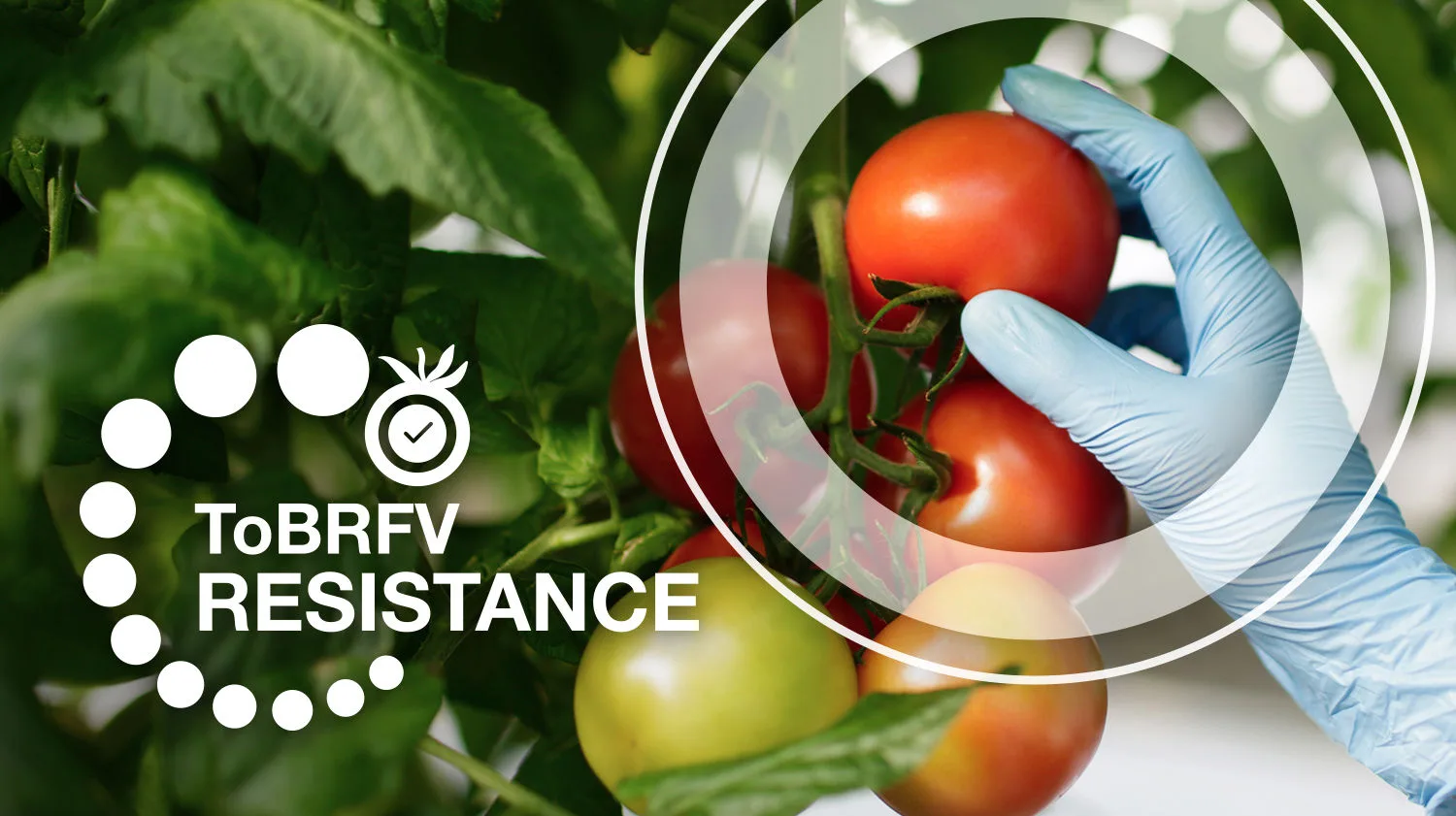"It looks like the transmission of the infection between the top of the plants is spreading much faster in the same row. This supports the advice that disinfection of trolleys and gloves is a way to reduce the spreading of the virus."
Tomato Brown Rugose Fruit Virus (ToBRFV) is not 'infecting' the plant and plants in a row in an equal way. The virus wants to be where the active growing points are and multiplicate there fastest. Viruses prefer some parts of the plant more than other parts. This is the conclusion of an experiment conducted by Bayer in red coloring truss tomatoes.
Virus increase in plants
There seems to be a big difference in ToBRFV increase between tomato plants. In the case of the experiment, we looked at an uncontrolled natural infection at a grower's location. Individual plants on the same gutter were tested every 2 weeks, sepals of the red fruits, see graph, with the RT-qPCR method. The lowest amount of virus that can be detected reliably is around a Ct 32. For that reason, the graph starts at 32. In case of an active infection the Ct value goes down in time, meaning the virus amount increases.
The graph shows that in 2 weeks' time the virus increases strongly, with several plants going from Ct 30 till around Ct 15 (rows e and f). Other plants are still around a Ct of 30. The plants in row e and f continue to show decreasing Ct values reaching a Ct around 10 after 4 to 6 weeks.
Looking at row b (the red line) this plant is maybe not really infected at 0, 2 and 4 weeks, as the Ct is around 30. The low levels of virus being detected may be virus coming from neighboring plants, meaning that the virus is lying on the outside of this plant rather than internal infection. Six weeks after starting testing, the Ct is 21 indicating virus infection is present, and in the weeks after the Ct values continue to drop.
The group of plants with an early infection shows a strong initial drop in rows e and f (lines in blue and green). Plants in these rows which are tested later in time seem to have a slower increase of the virus.
First measurement was towards the end of April and 4 weeks later it is half May, and in those plants the virus increase seems reduced.
After 4 till 10 weeks all plants are becoming heavily infected reaching a Ct value around 10.
 ToBRFV increase in tomato plants over time. ToBRFV virus presence was measured with RT-qPCR and expressed in Ct values. Lower Ct values means higher virus numbers.
ToBRFV increase in tomato plants over time. ToBRFV virus presence was measured with RT-qPCR and expressed in Ct values. Lower Ct values means higher virus numbers.
2 stems other infection level
Monitoring for ToBRFV in 2 stems of 1 plant in which the stems are hanging in 2 different paths, showed in some cases a big difference of virus concentration. The difference in virus concentration was up to 15 Ct points in the following weeks and differences in visible symptoms were also observed.
This was surprising because it was expected that virus would be spread from the stem through the stem base and roots then to the other stem of the plant. It looks like the 2 heads of the plant may be more or less autonomous. It is known that the above plant parts are in contact with their 'own' roots but virus exchange was expected to occur as it is a shared rooting system. This is only a small experiment and this may not be standard in all cases.

Tomato plants were tested with RT-qPCR for ToBRFV concentration. Lower Ct values mean higher virus numbers. Plant stems were hanging in 2 different paths, indicated as left and right from 1 plant. Week 0 is the beginning of June; biweekly testing is done till the half of July.
Observations
Plants on the same slab or gutter can have different viral loads. The viral load is even different between the 2 stems on the same rootstock of 1 plant hanging in different paths. Both observations indicate that the roots are probably not the most important transmission way for the virus.
It looks like the transmission of the infection between the top of the plants is spreading much faster in the same row. This supports the advice that disinfection of trolleys and gloves is a way to reduce the spreading of the virus.
This article was prepared by Harmen Hummelen, field quality lead, and is #3 of our Bayer's Growing with ToBRFV: A new reality series. Stay tuned for part 4 of this series on ToBRFV on virus prevention after detection, which will be published shortly
Taking action against ToBRFV
Tomato brown rugose fruit virus (ToBRFV) is a viral disease impacting tomato plants that is spreading rapidly around the world. At Vegetables by Bayer, our industry-leading R&D team is working to provide long-lasting, science-based solutions. Learn more and get the latest news and information on ToBRFV from on how you can help prevent the spread of ToBRFV.




